Marble-Look Quartz Worktops
During the nine years I have been in the stone worktop industry, the biggest change I have seen is in increasing volume of quartz worktops that we produce. Specifically, and with increasing rapidity over the last three or so years, that growth has been in the demand for of the marble-look quartz worktops. We have already written about that in general, here and here, as part of wider trends, and in focussing on specific ranges. But the question we have never treated in any depth is just why marble-look quartz products are made. Why copy a stone which is relatively plentiful in nature?
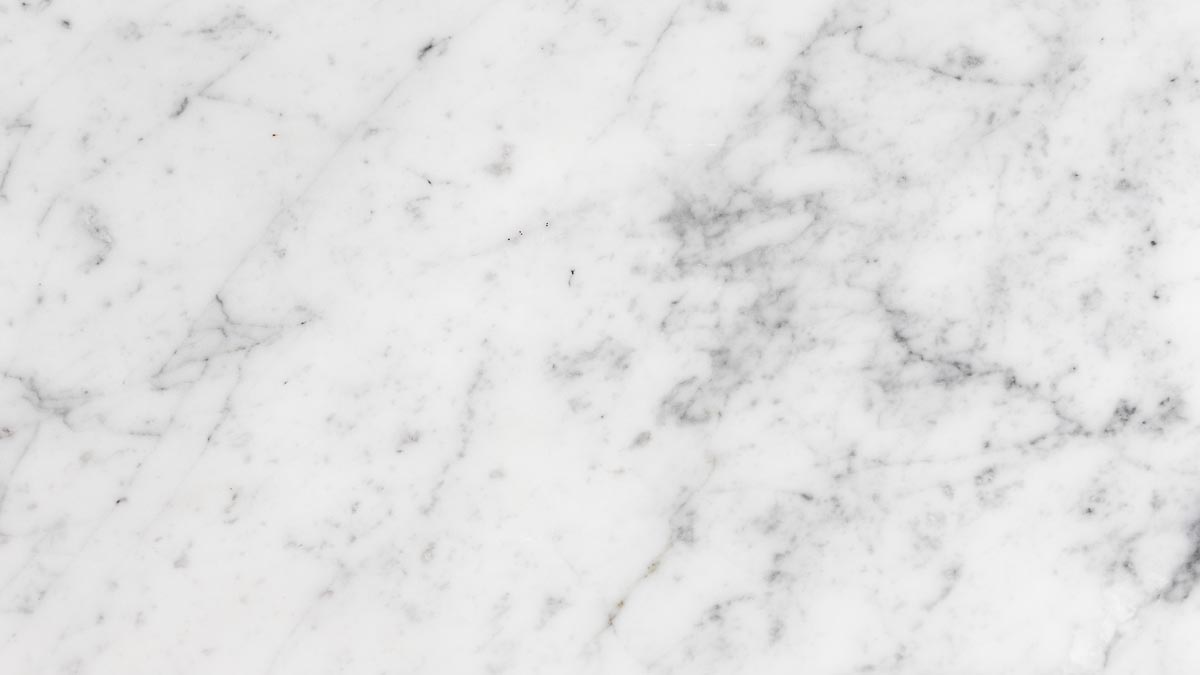
Real Carrara Marble – more economical than the copies made of it
Many people assume that the reason is cost. Marble is seen as luxurious and expensive, and the expectation is that a man-made product will undercut that very nicely. Think real diamonds and cubic zirconium! But actually, nothing could be further from the truth. Although some natural stones are astronomically expensive and others are just “highly priced”, many marbles are quite reasonably priced in comparison with natural granites and quartz. In fact, for some of the most popular marble “looks”, like Carrara or Botticino, the quartz copy may be two or three times the price of the original.
No, the reason is not cost. The reasons for making marble look quartz worktops are historical, social and technical.
Quartz Worktops and Marble Worktops: A bit of history
People associate marble with kitchens because of the use made of the stone in the Victorian house. A marble slab for pastry work or a thick marble butcher’s block were good ways to keep food cool. The block could be washed down easily and hygienically.
Marble is a relatively soft stone, in comparison with industrial granites, and could be worked relatively easily for home use. But that softness is also its problem. In common with chalk, limestone and travertine, as well as many other lesser-known stones, marble is made out of Calcite – or Calcium Carbonate. These common rocks, formed in the distant past from the shells of sea creatures, are all susceptible to acid attack.
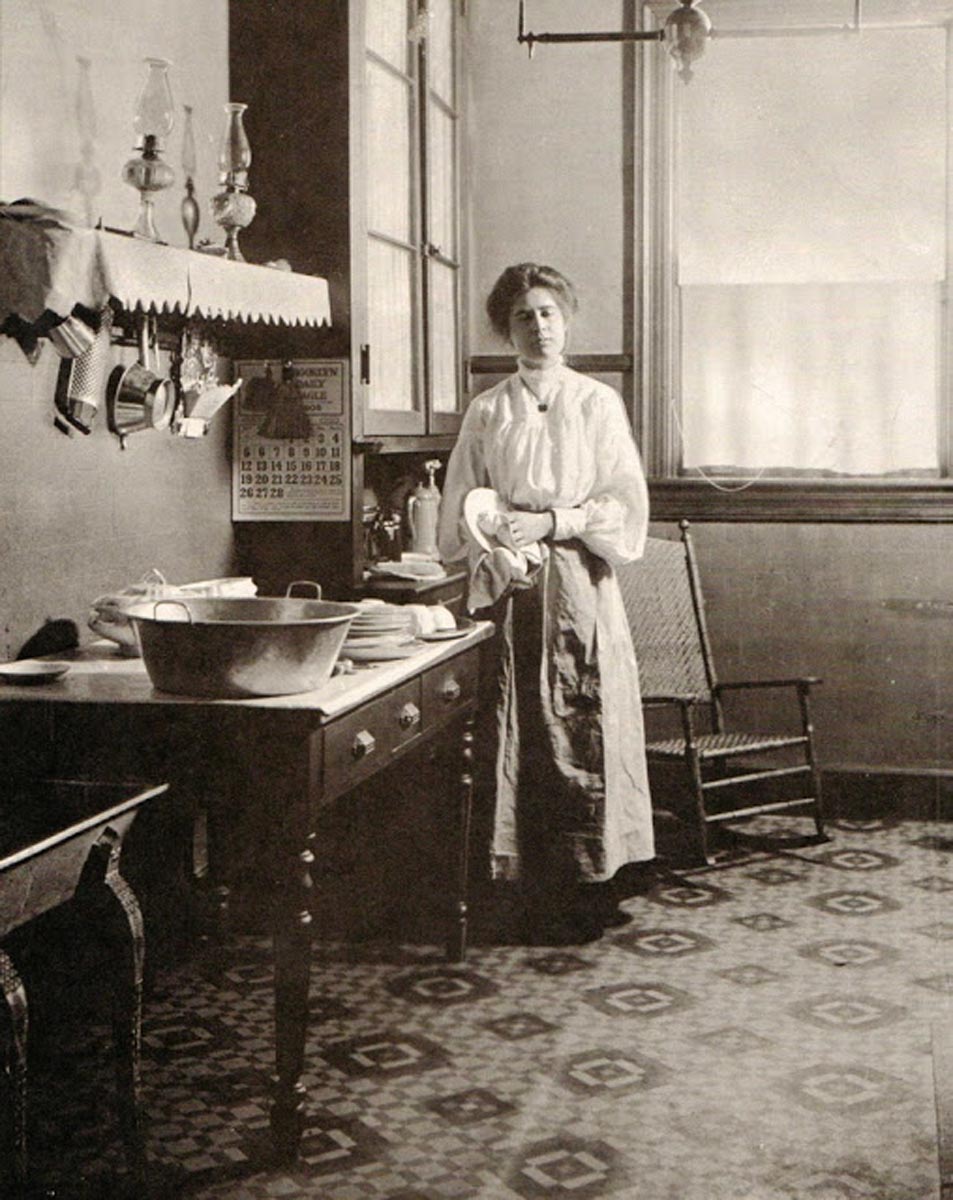
To put it bluntly, if you put even fairly mild household acids (including vinegar, lemon juice or wine) onto Calcite, it will fizz Carbon Dioxide and the surface will be eroded. Victorian butcher’s blocks and pastry slabs changed appearance and even shape as they were eroded by use and cleaning processes. But did that really matter?
You have to remember that the Victorian kitchen, in anything other than the poorest of homes, was not somewhere any visitor would ever see. The first home I ever owned was an Edwardian terrace in Dulwich. It would have had some pretensions to lower middle class splendour. I remember a stained-glass screen across the top of the hall, just past the front room door, from which a curtain would have hung. Visitors would have been ushered into the only “public” room in the house – the majority would never even see the stairs, let alone get as far as the kitchen. And in big homes, Downton Abbey style, the man of the house himself would have rarely if ever ventured below stairs.
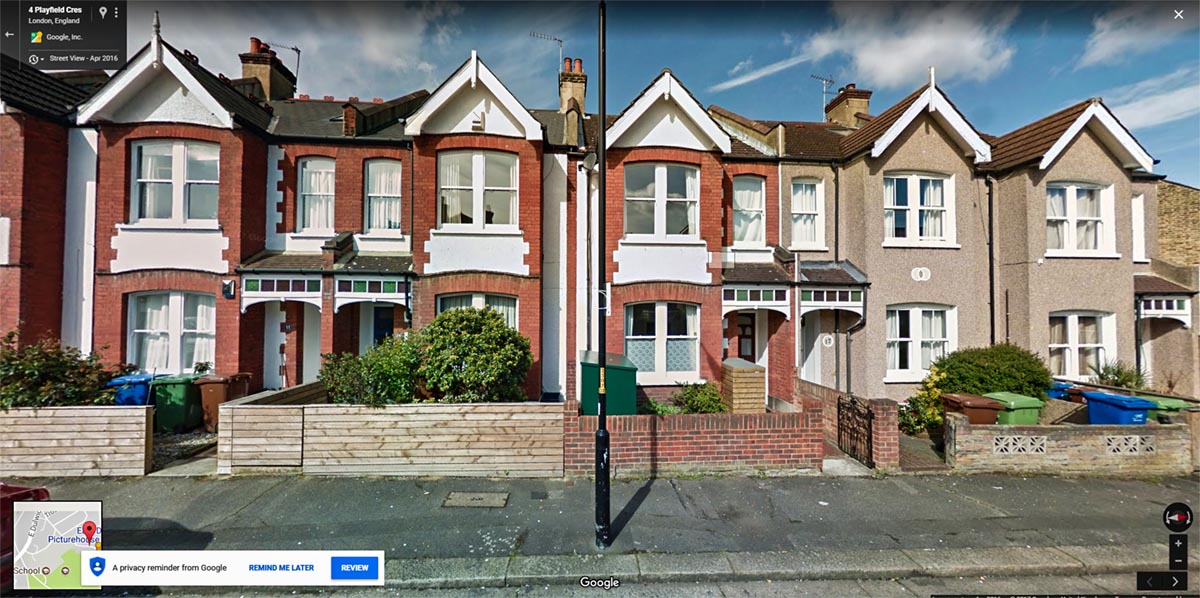
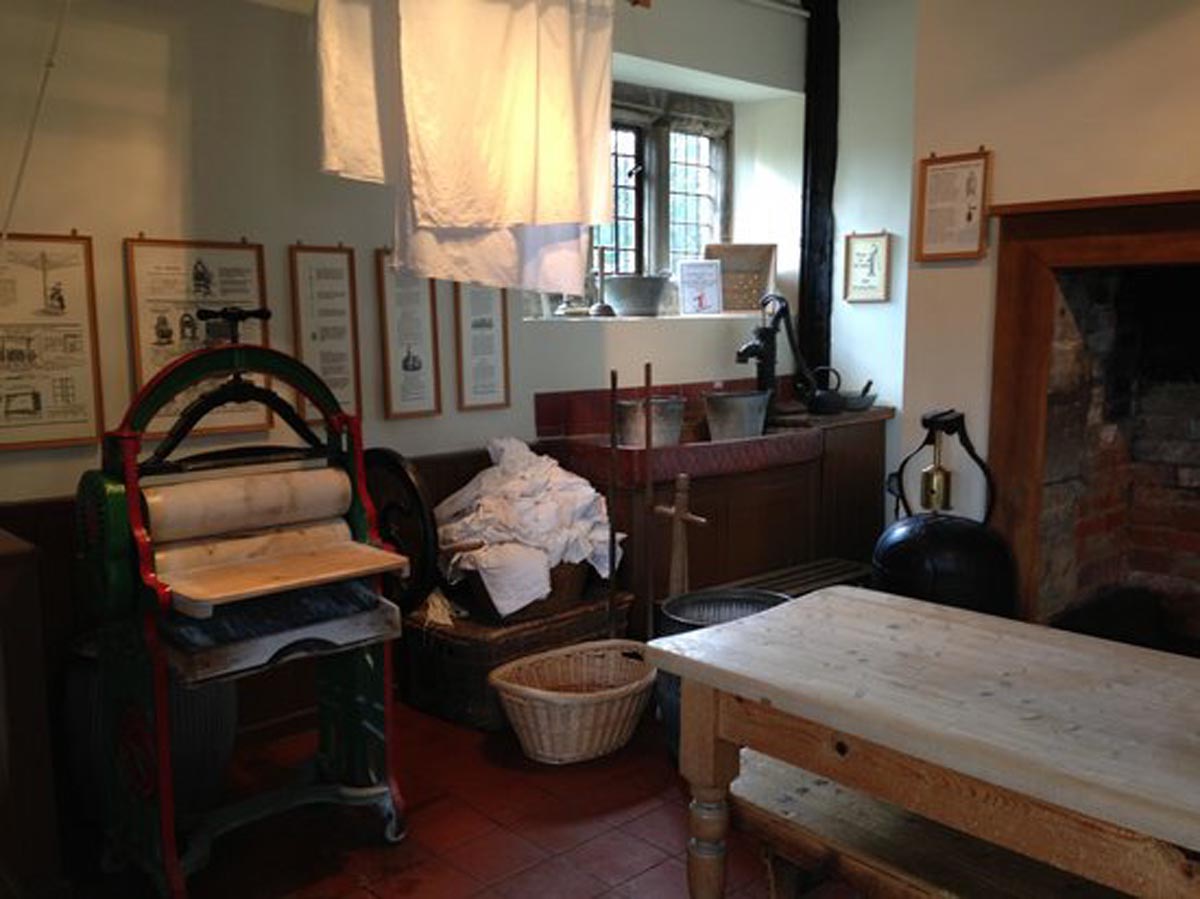
Marble-topped table in a museum piece Victorian kitchen
So, the Victorian kitchen was not really about looks at all, but functionality. Stains or etching of marble were not a problem. Only the servants would ever see the problem! And when the butcher’s block became just too eroded to be useful – it was replaced.
The idea of “the kitchen as the heart of the home” came much later. The very thought of relaxing and chatting with friends in the kitchen would have made a Victorian hostess’ hair stand on end. And the idea of open-plan, kitchen-diners would have been equally appalling. But as the kitchen gradually became more and more a space into which people were invited, so how it looked became ever more important.
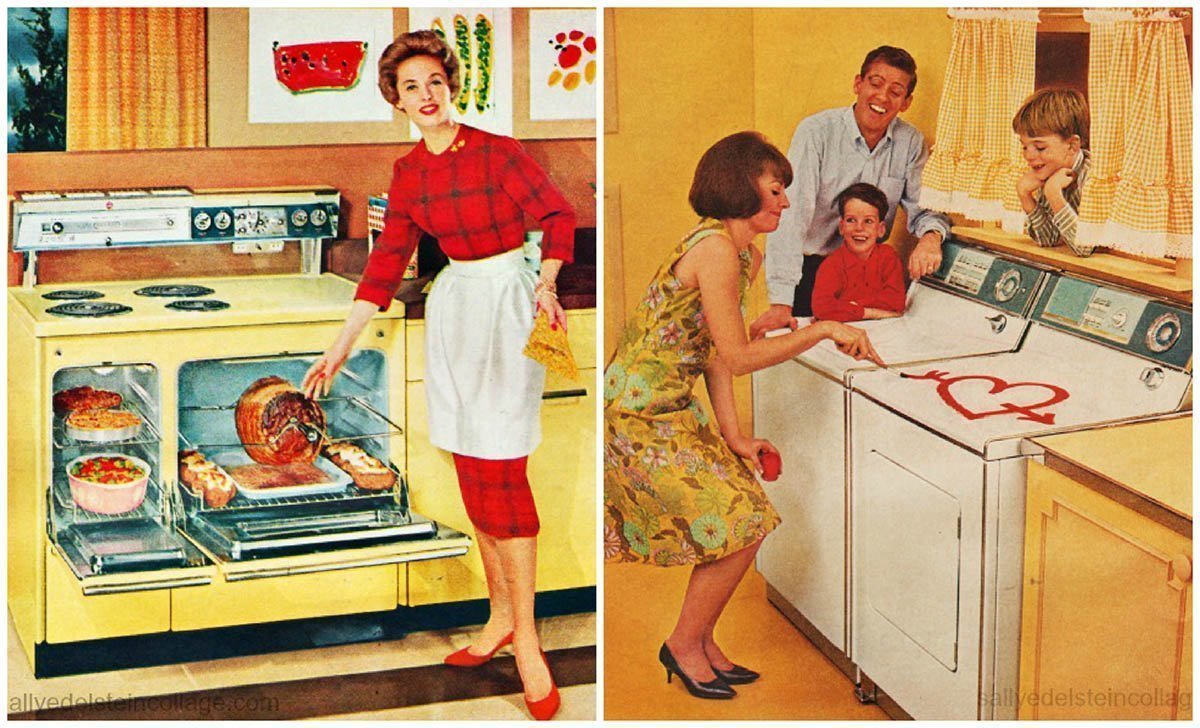
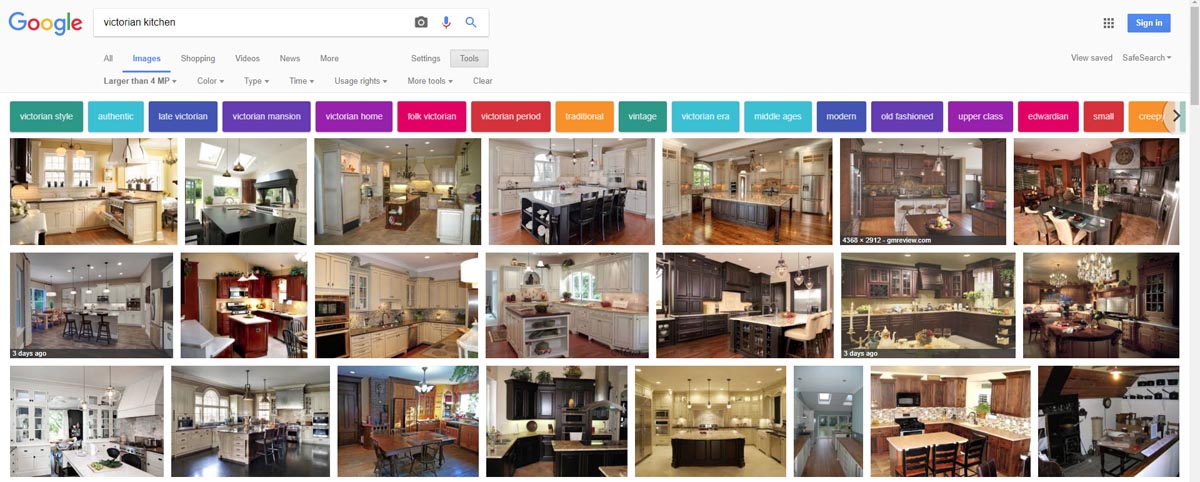
Results of search for Victorian Kitchen on Google Images
The fact is that when we think about “a Victorian kitchen” the image we have is far from the historical reality. Google “Victorian kitchen” and you will find a thousand images of kitchen units and marble-look worktops. All of them will look vaguely old fashioned (so no slab high-gloss doors) but actually they are just as modern as the most minimalist look kitchen. We have a rose-tinted, honey-coloured view of the “Victorian home” which either has no link with reality, or comes only from visits to the massive kitchens of a few stately homes, where the blood and grime have given way to the hushed perfection of the museum.
As the role of the kitchen within the home changed, so did the technology we use to cut stone. Stones which were far to hard to cut and polish, at least on any scale, in the 19th and early 20th centuries became available with the arrival of synthetic diamonds for cutting from the mid-1950s. It took a while, but eventually, cutting and polishing granite and other igneous rocks became feasible at a reasonable price. This allowed something of the rose-tinted Victorian dream to be realised in a kitchen that was going to be seen and needed to last – the granite worktop was born.
Steel Grey Granite, a hard igneous rock, on the bridge saw
But we still hanker after marble, quite specifically. Those visions of Victoriana, even if quite false, die slowly. How can we have a marble worktop that looks great and goes on looking great after a decade of lemons, vinegar and general wear and tear?
The Arrival of Quartz: The artificial answer to the marble-acid problem
The answer was in the new technology of quartz. This rather misleading name doesn’t refer to the naturally occurring mineral, but to the engineered, plastic-glued “stone” which is now such a dominant player in the kitchen worktop market. The first quart stones on the market had a granular, sandy look. Then came puyrer colours, and the then the sparkly, mirror quartz look. Then, from the beginning of this decade came the first attempts to emulate natural marble.
To begin with, designs didn’t look very much like the real thing, with some of the marbling looking rather “printed on”. Over time, though, a full-bodied marbling has been achieved, and, more recently, more and more products achieving a “big vein” look, with pattern running right across and through the slab.
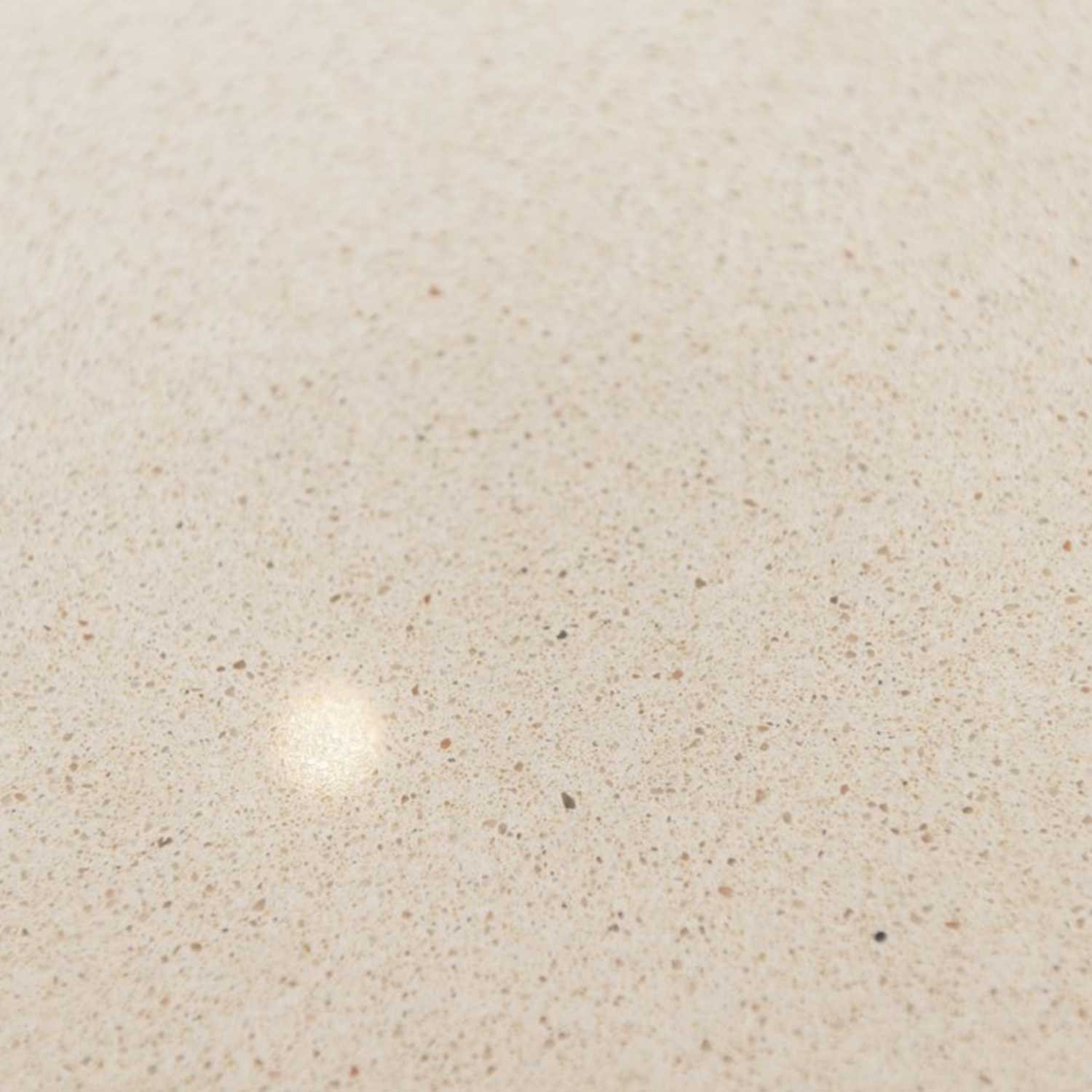
Silestone Blanco City –
a typical, older quartz design – a simple, user-friendly,
doesn’t-pretend-to-be-natural, granular stone.
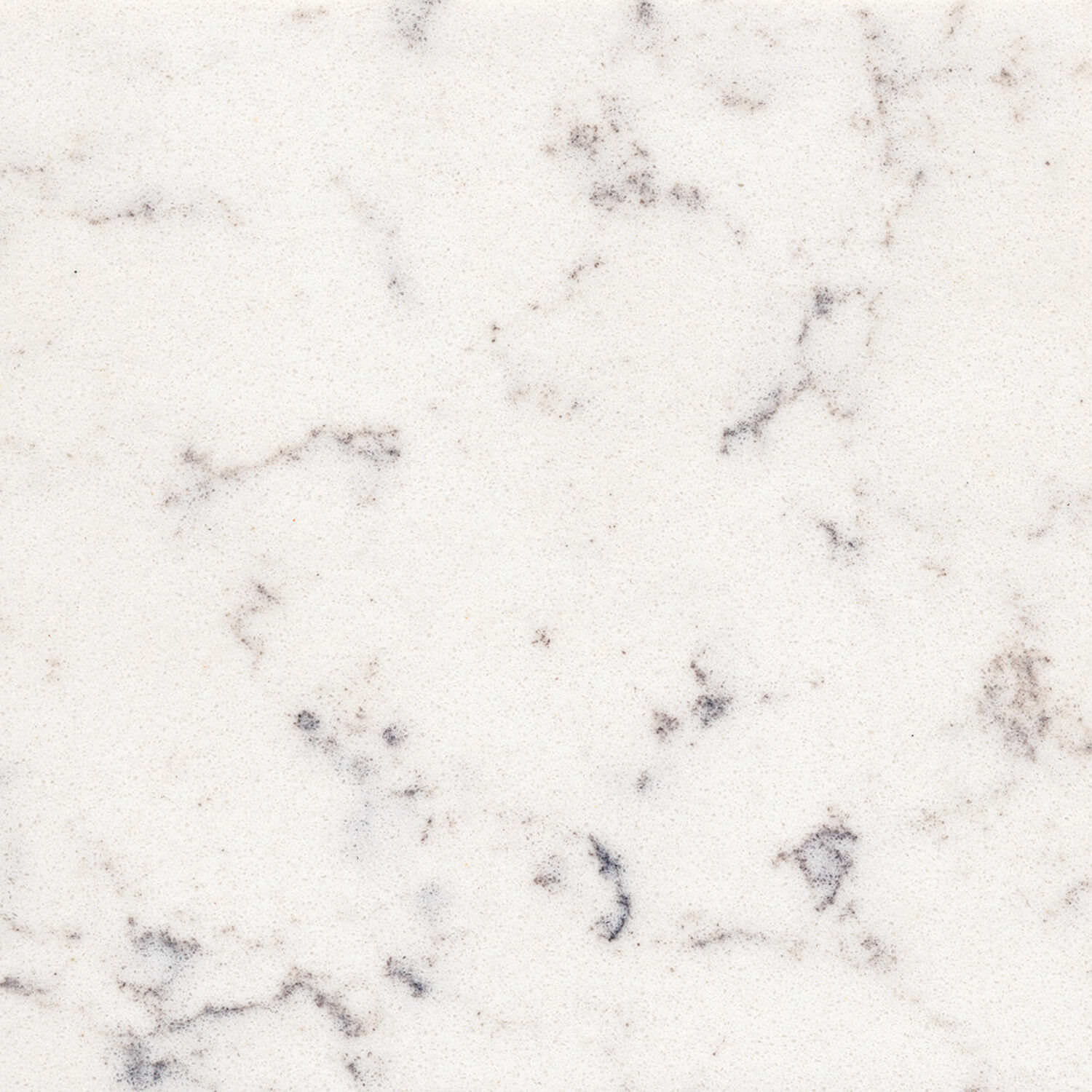
Silestone Lyra – an older marble-look quartz
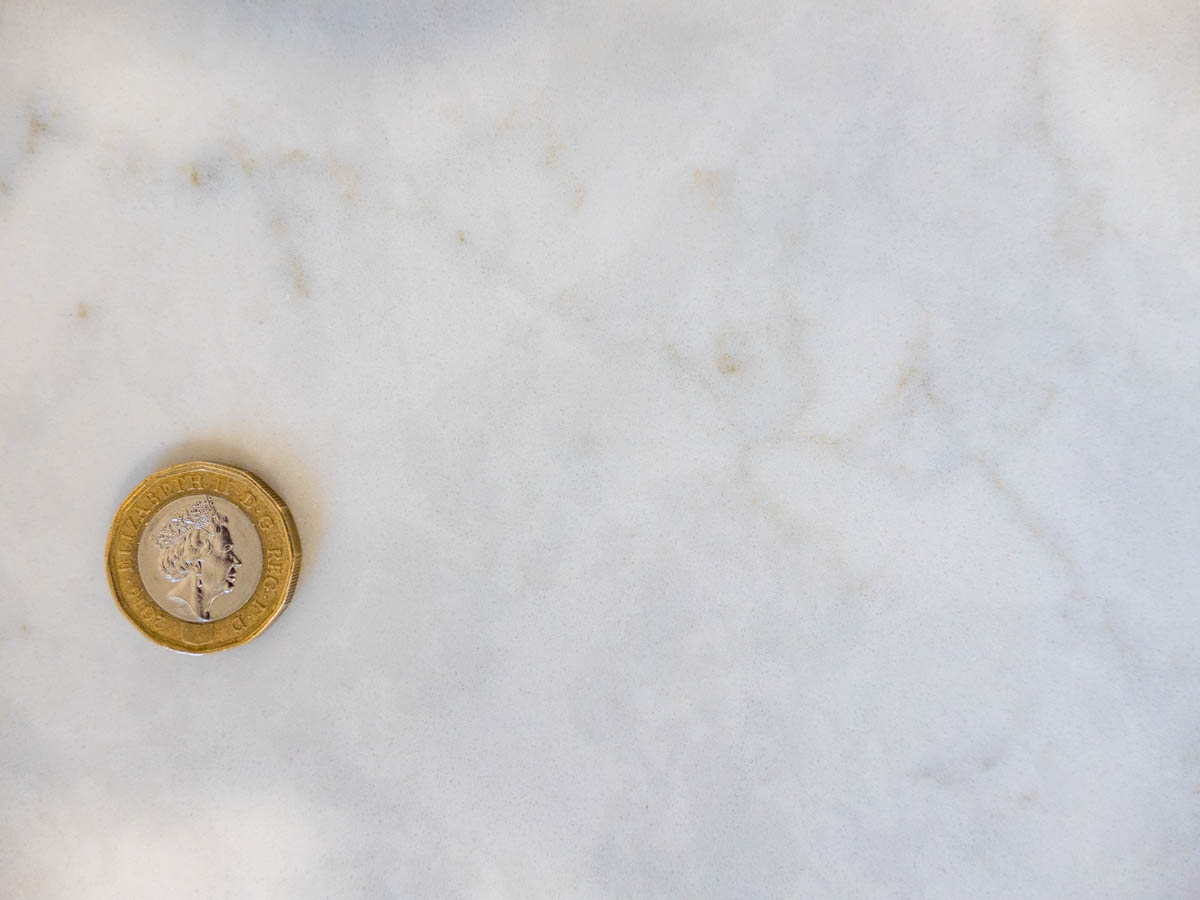
Classic Quartz Olympia –
a recent yet relatively economical quartz,
showing how subtle the marbling is becoming
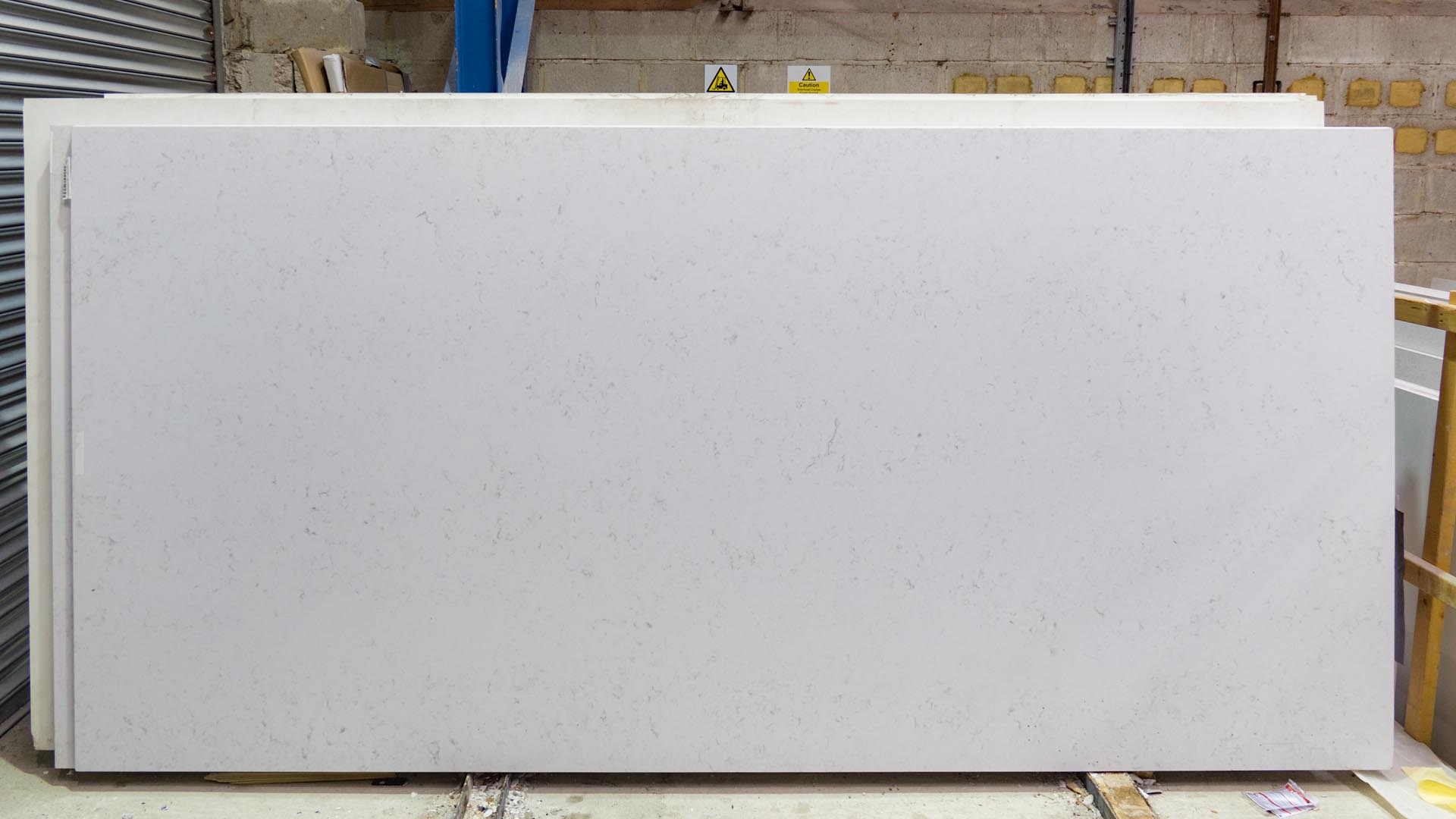
Arenastone Bianco Montagna
The latest small vein quartz from the Italian producer

Caesarstone Montblanc
The mastery of subtlety from one of the world’s great quartz brands
Check out this short video from quartz manufacturer Vicostone. This is not a brand name which is well known in the UK – but the same material is sold under the Unistone brand in the UK, and distributor by well-established stone wholesaler Brachot-Hermant. In the business since 1901, multinational, with distribution centres right across Western Europe, Brachot are a big player, and they don’t mess around with poor quartz. Unistone also scores by having some of the biggest slab sizes available. At 3.3×1.65 metres, their Jumbo slabs are often the only solution for larger kitchen layouts. See their Unistone web page here.
Good marble-look quartz worktops are a fair approximation to the real stone, but will not fizz and dissolve when you spill something on them. They will wipe clean and go on wiping clean, year after year. And THAT is why people make them, why we spend more on them than on the real thing, and why they keep on growing and growing in market share.
You can see our stock quartz stones here. Feel free to contact us to discuss marble-look quartz and any other worktop material. Please note that we do not, as a rule, stock actual marble.
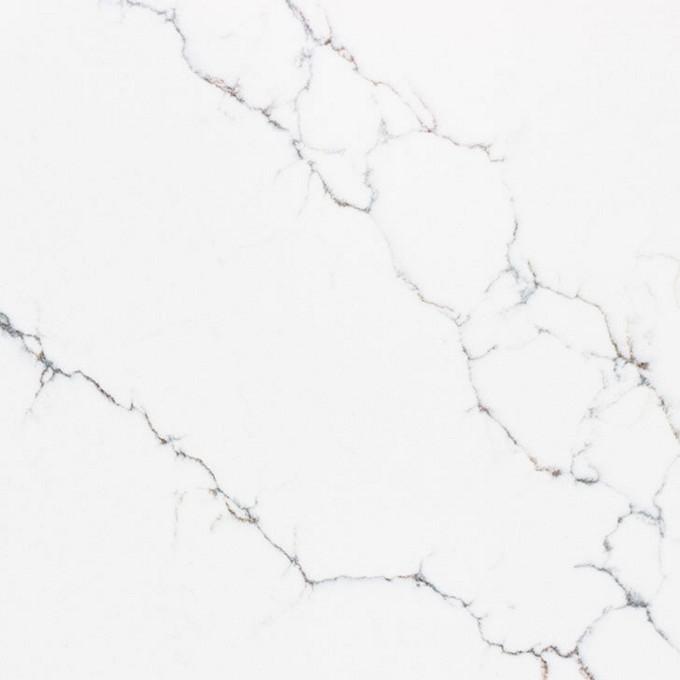
Unistone Carrara Venatino
The Challenges for Marble-Look Quartz: Still much work to do
Quartz manufacturers are constantly trying to copy more and more natural stones more and more effectively. But some types of marble are really hard to get right! All the same, research and development of kitchen worktop materials continues. Who knows if before long we will have a fair copy of this stunning Portoro Gold?!
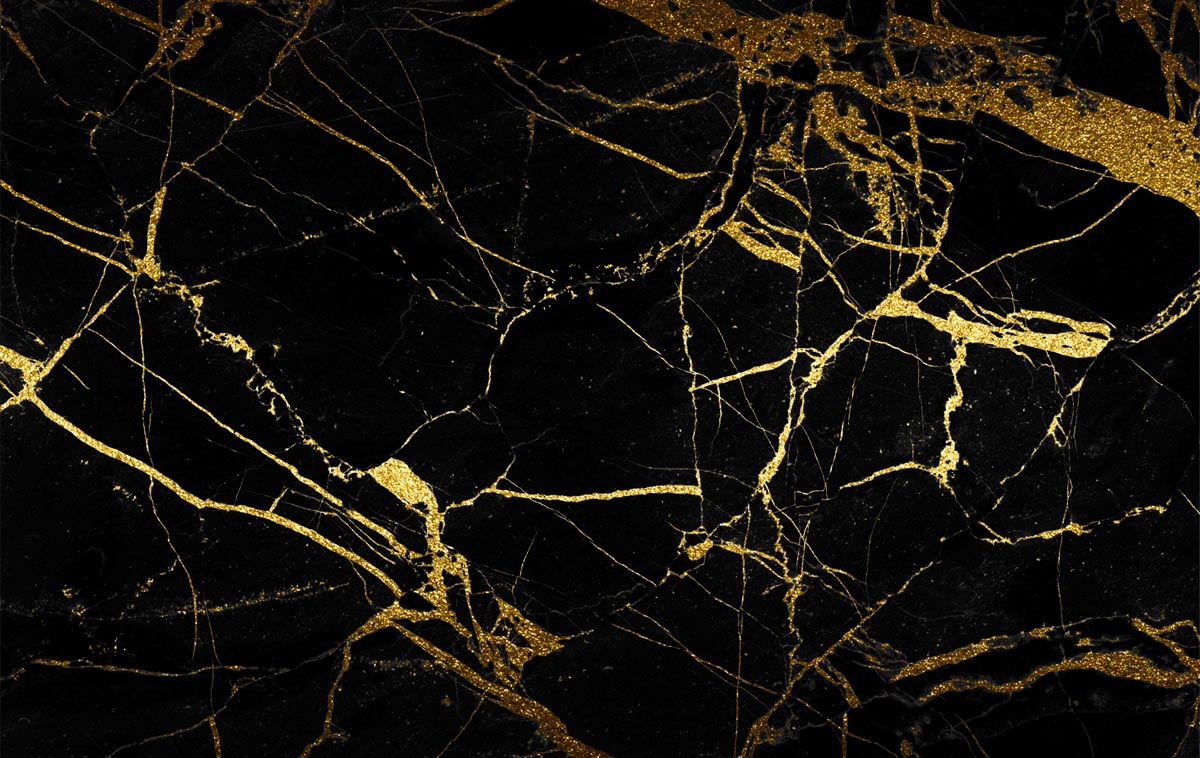
Portoro Gold, Black and Gold Marble – stunning, ludicrously expensive, and decent quartz copies are beginning to come through. Take a look at our more recent Blog here.
Disclaimer because this image is so popular: 1) we do not stock marble 2) we do not stock this marble in particular 3) we would happily buy it especially for you but be warned that the shirt off your back, your last dollar and an arm and a leg would all be involved!
We are Affordable Granite, the leading granite and quartz installer in Surrey, Sussex and across the South East. We are pleased to stock and fit many marble-look materials. Just occasionally we have real marble, although we do not regularly stock marble, limestone or travertine. For questions, queries and quotes connected with any aspect of worktop installation or kitchen design, please don’t hesitate to contact us on 01293 863992 or by email on sales@affordablegranite.co.uk/ .
